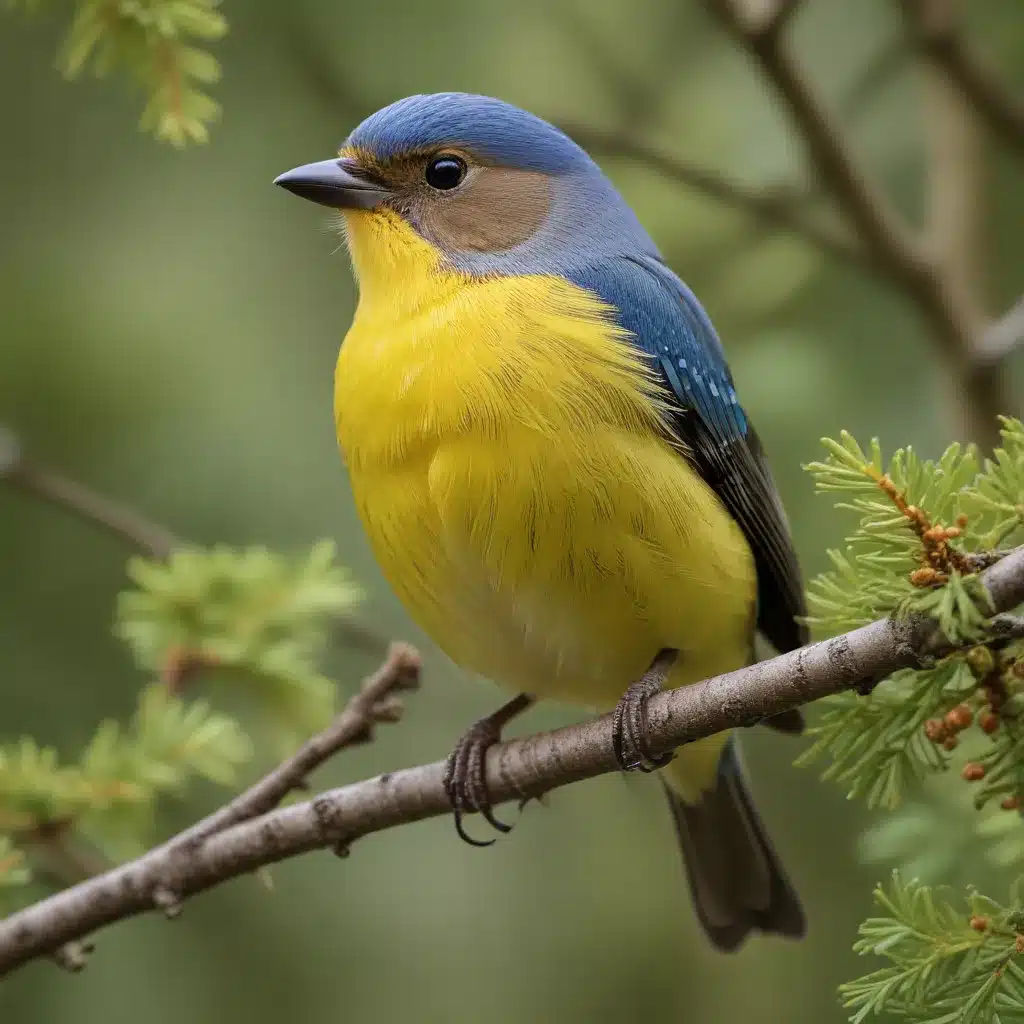
Avian Seasonal Adaptations
As an experienced avian caretaker, I’ve had the pleasure of observing the remarkable seasonal changes that birds undergo. These feathered friends are true masters of adaptation, seamlessly transitioning through the rhythms of nature to ensure their survival and thrive.
Migratory Bird Movements
One of the most captivating aspects of avian life is the remarkable migratory patterns that many species follow. Birds like Canada geese, Monarch butterflies, and Ruby-throated hummingbirds embark on incredible journeys, sometimes traveling thousands of miles to reach their desired breeding or wintering grounds. The timing of these migrations is a true testament to the birds’ innate navigational abilities and sensitivity to environmental cues.
Nesting and Breeding Behaviors
As the seasons change, birds shift their focus to the crucial tasks of nesting and breeding. I’ve witnessed the meticulous nest-building process, where species like the American robin and the House wren carefully select materials and construct intricate homes to shelter their young. The courtship rituals that precede mating are equally captivating, with birds showcasing their plumage, performing elaborate dances, and engaging in vocal competitions to attract mates.
Plumage Changes
Another remarkable adaptation is the seasonal changes in a bird’s plumage. As the year progresses, species like the Mallard duck and the Northern cardinal undergo transformations in their feather patterns and coloration. These changes not only serve to camouflage the birds during different environments but also play a crucial role in their courtship and mating behaviors.
Feathered Competitors
While birds may seem like delicate, peaceful creatures, the avian world is also home to fierce competitions and displays of dominance.
Avian Contests and Displays
I’ve witnessed numerous instances of birds engaging in competitive behaviors, from aerial acrobatics and territorial displays to aggressive confrontations. The male Bald eagle’s dramatic courtship flights, the Red-winged blackbird’s bold territorial defense, and the Hummingbird’s lightning-fast aerial maneuvers are just a few examples of the impressive avian displays I’ve had the privilege to observe.
Species-Specific Courtship Rituals
Each bird species has its own unique courtship rituals, and witnessing these intricate behaviors is truly captivating. The elaborate dances of the Sandhill crane, the synchronized wing-clapping of the Mourning dove, and the mesmerizing aerial displays of the Greater sage-grouse are just a few examples that showcase the remarkable diversity of avian courtship.
Victorious Bird Champions
Through these competitions and displays, some birds emerge as true champions, demonstrating their physical prowess, strategic intelligence, and unwavering determination. I’ve been amazed by the resilience and resilience of species like the Northern mockingbird, the American kestrel, and the Red-tailed hawk, which have triumphed over rivals and secured their place in the avian hierarchy.
Avian Acoustic Performances
The avian world is also a symphony of sound, with each species contributing its unique voice to the seasonal chorus.
Birdsong Repertoires
From the melodious trills of the Carolina wren to the haunting calls of the Common loon, birds possess an incredible repertoire of vocalizations. I’ve been captivated by the way these songs not only serve as a means of communication but also express the birds’ emotions and territorial claims.
Vocalizations and Communication
Beyond just singing, birds utilize a wide range of vocalizations to convey information, warn of danger, and coordinate with their flocks. The sharp alarm calls of the Chickadee, the distinctive drumming of the Downy woodpecker, and the soothing coos of the Mourning dove are just a few examples of the diverse ways birds communicate.
Seasonal Choruses
As the seasons change, the avian soundscape transforms, with different species joining the chorus at various times of the year. The dawn chorus in the spring, the cacophony of migratory birds in the fall, and the winter’s haunting calls all contribute to the ever-evolving symphony of the natural world.
Celebrating Winged Wonders
As an avid birdwatcher and enthusiast, I’m continually in awe of the remarkable adaptations, behaviors, and diversity of the avian world. Celebrating these feathered champions is not only a delight but also a crucial aspect of avian conservation and appreciation.
Appreciating Avian Diversity
From the majestic Bald eagle to the diminutive Hummingbird, the avian kingdom is a tapestry of breathtaking diversity. I encourage everyone to take the time to observe and appreciate the unique characteristics of different bird species, whether it’s the iridescent plumage of the Peacock, the graceful soaring of the Turkey vulture, or the whimsical antics of the Tufted titmouse.
Avian Conservation Efforts
As avian caretakers, it’s our responsibility to support and advocate for the protection of these winged wonders. Through initiatives like habitat restoration, responsible birdfeeding practices, and education programs, we can ensure that these remarkable creatures continue to thrive for generations to come. Visit Mika Birds Farm to learn more about how you can get involved in avian conservation efforts.
Birdwatching and Birding
Engaging in birdwatching and birding activities is a wonderful way to connect with the avian world and celebrate its seasonal triumphs. Whether it’s setting up a backyard birdfeeder, embarking on guided birding tours, or simply taking a mindful stroll through a local park, these experiences offer a unique opportunity to observe the intricate behaviors and adaptations of our feathered friends.
As we immerse ourselves in the avian world, we are reminded of the beauty, resilience, and sheer wonder of these remarkable creatures. By celebrating their seasonal triumphs, we not only deepen our appreciation for the natural world but also inspire others to join us in protecting and preserving the vibrant tapestry of avian life.


